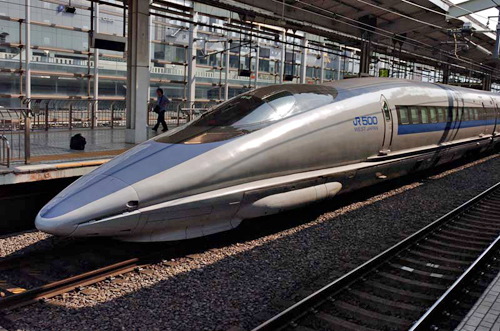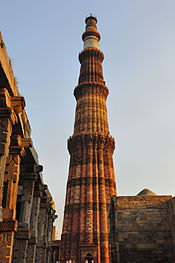Price subsidies have been a very important part of the Indian government’s plan of trying to bring down poverty in the country. This entails selling commodities like rice, wheat and kerosene, at a price significantly lower than the market price through the public distribution system.
But the question is, do these subsidies work? The Economic Survey for 2014-2015 had said that: “Prima facie, price subsidies do not appear to have had a transformative effect on the living standards of the poor, though they have helped poor households weather inflation and price volatility.”
What are the basic problems with these subsidies? Subsidies are regressive. This basically means that the rich households tend to benefit more from them than the poor for whom the subsidies are meant.
Take the case of cooking gas which the oil marketing companies sell at a loss and are in turn compensated by the government. It turns out that the poorest 50% of the households consume only 25% of the cooking gas.
Further, subsidies don’t reach those who they are meant for. Around 46% of kerosene which has to be distributed through the public distribution system(PDS) is lost as a leakage. This basically means that the kerosene is siphoned off by those running the shops that constitute the PDS and the government functionaries involved. It is then sold in the open market.
This story plays out across other commodities distributed through the PDS as well. Nearly 54% of the wheat meant to be distributed through PDS is lost as a leakage. Around 48% of the sugar and 15% of rice meant to be distributed through the public distribution system is lost as a leakage.
Fertilisers also face a similar leakage problem. As the Economic Survey of 2015-2016 released a few hours back points out: “The government budgeted Rs 73,000 crore—about 0.5 per cent of GDP—on fertiliser subsidies in 2015-16. Nearly 70 percent of this amount was allocated to urea, the most commonly used fertiliser, making it the largest subsidy after food.”
Subsidised urea has three kinds of leakages. As the Survey points out: “(i) 24 per cent is spent on inefficient urea producers (ii) of the remaining,4 1 per cent is diverted to non-agricultural uses and abroad; (ii) of the remaining, 24 per cent is consumed by larger—presumably richer—farmers.”
These are huge leakages which cost the government a lot of money. So what can be done about this? As the Economic Survey points out: “Cash transfers can directly improve the economic lives of India’s poor, and raise economic efficiency by reducing leakages and market distortions.”
The current model of distribution of subsidies is essentially very leaky. This has led to a situation where only 35% or Rs 17,500 crore of the total urea subsidy of Rs 50,300 crore reaches the small and marginal farmers, the intended beneficiaries.
It is estimated that 75% subsidy on agricultural urea has essentially managed to create a thriving black market in the Bangladesh and Nepal. As the Economic Survey points out: “Comparing urea allocation data with estimates of actual use from the Cost of Cultivation Survey 2012-13, we estimate that 41 per cent of urea is diverted to industry or smuggled across borders.”
Further, there is a huge black market for urea within India as well. “It is estimated that about 51 per cent of Indian farmers buy urea at above-MRP. In the three eastern states bordering Bangladesh, 100 per cent of farmers had to buy urea at above MRP in the black market. Similarly, in Uttar Pradesh, which borders Nepal, 67 per cent of farmers had to buy urea in the black market at above the stipulated MRP,” the Survey points out.
The simple answer to prevent this leakage would have been better policing. Nevertheless, as World Bank chief economist Kaushik Basu writes in An Economist in the Real World—The Art of Policymaking in India: “Trying to police such a large system by creating another layer of police and bureaucracy will come with its own problems of corruption and bureaucracy.” It also leads to the proverbial question of who will police the police?
The answer lies in coming up with a better design in order to deliver food grains, fertiliser and kerosene to the poor. Essentially, the role of the PDS shop owner needs to be cut down. The Economic Survey for 2014-2015 as well as the Economic Survey for 2015-2016 talk about direct cash transfers to beneficiaries of these subsidised commodities, instead of distributing them through the PDS.
Instead of distributing food grains, fertiliser and kerosene through the PDS shops, the intended beneficiaries need to be given money through cash transfers and be allowed to buy commodities from wherever they want to.
As the Survey for 2014-2015 pointed out: “Recent experimental evidence documents that unconditional cash transfers – if targeted well – can boost household consumption and asset ownership and reduce food security problems for the ultra poor.”
In fact, Basu explains this in some detail in his book through the concept of food coupons, which are again nothing but cash transfers. He envisages a system where the poor get food coupons or cash transfers and they then use that money to buy kerosene, fertiliser and food grains from any shop instead of just the PDS shop in their neighbourhood.
As he writes: “Note that since the stores get full price from the poor and, more importantly, the same price from the poor and the rich, they will have little incentive to turn away the poor away. Further, the incentive to adulterate will also be greatly reduced since the poor will have the right to go to any store with their coupons [or cash for that matter].”
This means that the PDS shops are also likely to sell good stuff, instead of trying to adulterate the commodities. Further, the siphoning of the food grains, fertiliser and kerosene will also come down.
The fear here is that the poor will use their coupons or cash for something else. But that risk is anyway there in the current system as well. The poor can sell the grain or the kerosene that they get and do something else with that money.
Also, as Basu puts it: “If they choose not to take the benefit in the form of food and buy something else, it is not nearly so counterproductive as the benefit going to owners of PDS stores as often happens in the current system.” The chances of that money being spent and benefitting the economy are higher.
For this system to work the government needs to be able to link the Aadhaar number to an active bank account, in which it can transfer money. As of January 2016, around 970 million Indians have Aadhaar numbers. In fact, linking Aadhaar numbers to bank accounts has worked very well in case of subsidised cooking gas cylinders where black marketing has come down. “The use of Aadhaar has made black marketing harder, and LPG leakages have reduced by about 24 per cent with limited exclusion of genuine beneficiaries.”
As the Survey points out: “A number of states, like Andhra Pradesh and Gujarat, with high Aadhaar penetration and POS devices in rural areas might be good candidates to start pilots based on this model.”
Let’s hope this happens on a larger scale than it currently is, sooner rather than later.
(Vivek Kaul is the author of the Easy Money trilogy. He tweets @kaul_vivek)
The column originally appeared on Huffington Post India on February 26, 2016



